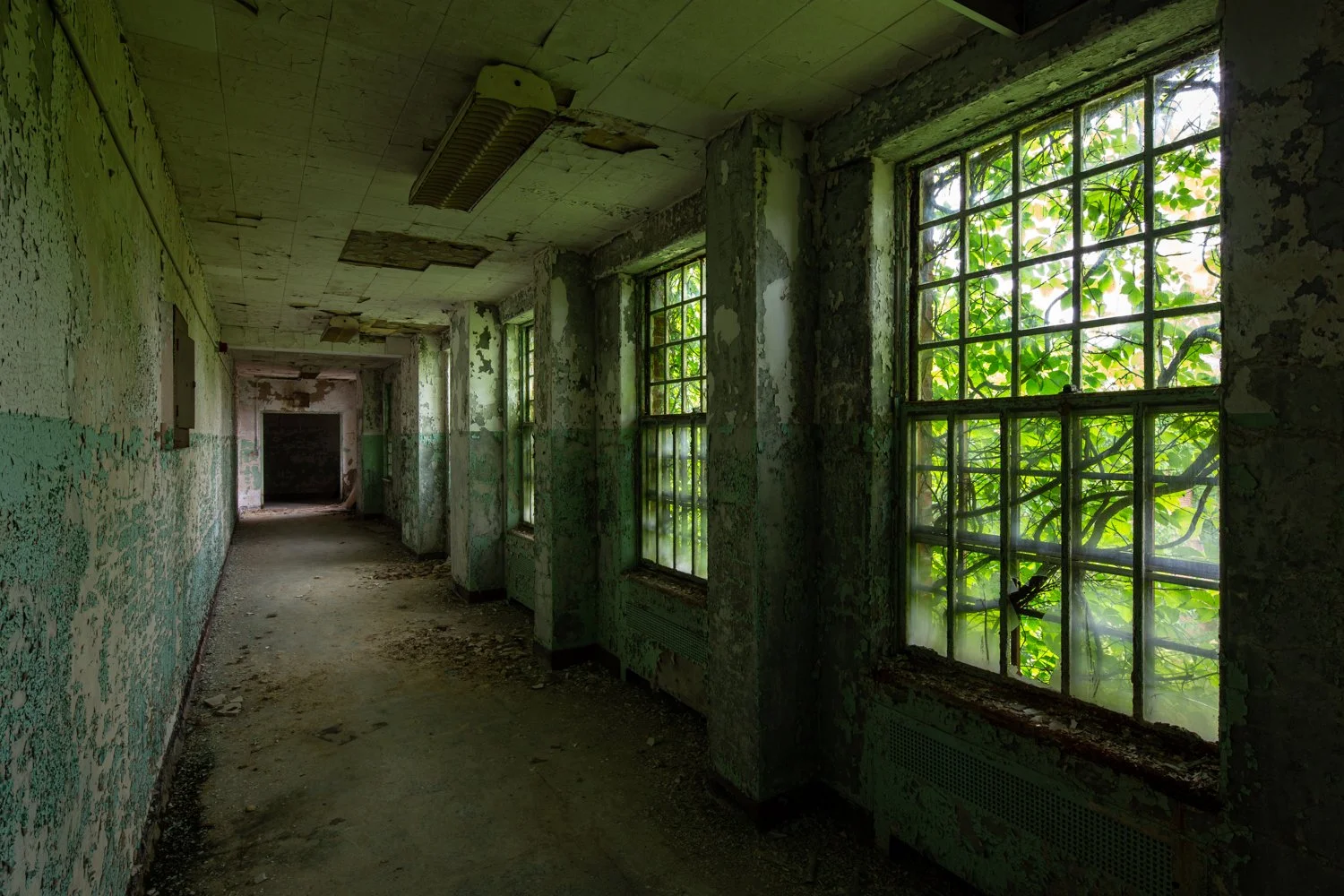Central State Hospital, Georgia
Central State Hospital in Georgia admitted its first patient in 1842, a few years after the state authorized a "State Lunatic, Idiot, and Epileptic Asylum." The 1,700 acre rambling plan facility in Milledgeville, was most successful when run by Dr. Thomas A Green, who implemented more humane patient care following the “institution is family” model, which meant that hospital leaders ate meals with staff and patients. During Green’s tenure, he also abolished the use of chains and straps as restraints and allowed most patients a new level of freedom within the institution.
At the time, it was required by law that there be separate buildings for patients of color. In 1866, the Milledgeville State Lunatic, Idiot, and Epileptic Asylum opened a building for those patients. In 1921, segregating patients came to an end, but racial tension was still an issue. In 1938, graves belonging to patients of color were dug up to accomodate a new building. Once reburied, they were identified by numbers instead of headstones. To date, it is estimated approximately 30,000 total patients were buried on the campus and sadly, in the early 1900’s staff removed many of the numbered markers leaving graves unidentified.
The hospital experienced a surge in patients in the late 1800’s, when nearby communities began to send their unwanted residents (alcoholics, criminals and elderly) to the facility, but it wasn’t until 1879, when Dr. Theophilus O. Powell, former assistant to Dr. Green, became Superintendent, that changes were made to to the practices for assessing and diagnosing patients. This process helped to ensure patients were being treated correctly and placed in the appropriate wards of the hospital when admitted. As patient numbers continued to climb throughout the 1900’s, patient care began to decrease due to the inability of staff to provide appropriate treatment. Around this same time, the hospital began implementing insulin shock and electro-convulsive therapy to large numbers of patients. Years later, once psychopathic drugs were introduced, some patients were able to return home quickly, but the overall population still remained quite high. In fact, in 1959, the patient count reached nearly 12,000 and this hospital competed with Pilgrim State Hospital in New York for the largest mental health facility.
The facility’s name changed three times before the 1960’s. In 1897, it was named Georgia State Sanitarium. In 1929, the facility’s name changed to the Milledgeville State Hospital and less than 40 years later, the hospital’s name was changed again to Central State Hospital, which has remained the institution’s name since.
The Walker Building (pictured below) was constructed in 1884 to receive white male convalescent patients. It remained in operation for 90 years before being abandoned and falling subject to the humid, damp weather. These days, much of the third floor ceiling has collapsed, walls are covered in peeling paint and flora is growing throughout the corridors.
The Jones Building (also pictured below) opened in 1929 and closed 50 years later. It functioned as a general medical and surgical building and contained an operating room, lab, X-Ray and morgue.

















































